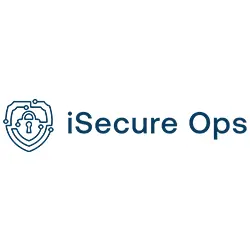In cybersecurity, staying informed about vulnerabilities is crucial for both individuals and organizations. One such recent vulnerability is CVE-2024-9180, identified in HashiCorp's Vault software. Whether you're a seasoned IT professional or someone curious about cybersecurity, this article breaks down what this CVE entails.
Who is Affected by CVE-2024-9180?
HashiCorp and Its Vault Users
- HashiCorp: A prominent player in infrastructure automation, HashiCorp develops Vault, a critical cybersecurity tool for managing secrets and protecting sensitive data.
- Vault Operators: Individuals with administrative privileges who manage and configure Vault instances within organizations are directly impacted by this vulnerability.
What is CVE-2024-9180?
Understanding the Vulnerability
CVE-2024-9180 is a privilege escalation vulnerability found in HashiCorp's Vault and Vault Enterprise products. This flaw allows privileged Vault operators with specific write permissions to escalate their privileges to the highest level within the Vault system, known as the root policy.
When Was CVE-2024-9180 Discovered and Published?
Timeline of Events
- Date Reserved: September 25, 2024
- Date Published: October 10, 2024
- Date Updated: October 18, 2024
The vulnerability was officially published on October 10, 2024, with subsequent updates to address new findings and provide additional information.
Where Does CVE-2024-9180 Impact Systems?
Affected Products and Platforms
- Affected Products:
- Vault Community Edition: Versions prior to 1.18.0 are vulnerable.
- Vault Enterprise: Versions prior to 1.18.0, including 1.17.7, 1.16.11, and 1.15.16, are susceptible.
- Supported Platforms:
- Architectures: 64-bit, 32-bit, x86, ARM
- Operating Systems: MacOS, Windows, Linux
Why is CVE-2024-9180 Significant?
Implications of the Vulnerability
CVE-2024-9180 falls under CWE-266: Incorrect Privilege Assignment, making it a critical security concern for several reasons:
- Privilege Escalation Risk: Unauthorized users or legitimate operators with specific permissions could gain access to Vault's root policy, granting full administrative control.
- High Severity: With a CVSS score of 7.2 (High), the vulnerability poses a significant threat, especially to organizations that rely heavily on Vault for managing sensitive information.
How Does CVE-2024-9180 Work?
Technical Breakdown
The vulnerability exploits how Vault handles permissions within the root namespace’s identity endpoint:
- Root Namespace’s Identity Endpoint: Manages identities and their associated policies within Vault.
- Write Permissions: Operators with write access can modify identities and their permissions.
- Exploitation Process: An operator with write permissions can alter their own or another user's privileges, elevating them to the root policy level. This unauthorized elevation grants full administrative control over Vault, bypassing intended security measures.
Mitigation and Resolution for CVE-2024-9180
Steps to Protect Your Systems
HashiCorp has released updated versions of Vault to patch CVE-2024-9180. To secure your systems, follow these steps:
- Update Vault:
- Vault Community Edition: Upgrade to version 1.18.0 or later.
- Vault Enterprise: Upgrade to version 1.18.0, or apply specific patches for versions 1.17.7, 1.16.11, and 1.15.16.
- Implement Best Practices:
- Regular Software Updates: Ensure all software is up-to-date with the latest security patches.
- Strict Access Control: Limit write permissions to the root namespace’s identity endpoint to trusted operators only.
- Continuous Monitoring: Use advanced cybersecurity tools like TRaViS ASM to monitor for unauthorized privilege escalations and suspicious activities within Vault.
How TRaViS ASM Enhances Security
TRaViS ASM is a powerful cybersecurity tool designed to provide comprehensive monitoring and automated threat detection. By integrating TRaViS ASM into your security infrastructure, you can:
- Detect Anomalies: Identify unusual behavior patterns that may indicate attempted privilege escalations.
- Automate Responses: Implement automated responses to mitigate threats in real-time.
- Enhance Visibility: Gain deeper insights into your security posture, ensuring vulnerabilities like CVE-2024-9180 are promptly addressed.
Where to Find More Information on CVE-2024-9180
Official Resources and References
For detailed insights and official guidance, refer to HashiCorp's advisory:
- HashiCorp Advisory: Vault Operators in Root Namespace May Elevate Their Privileges
Staying Ahead of Cyber Threats with CVE-2024-9180
CVE-2024-9180 highlights the critical importance of access control and timely software updates in maintaining robust cybersecurity defenses. By understanding the who, what, when, where, why, and how of this vulnerability, organizations can better protect their HashiCorp Vault deployments against potential threats.
Leveraging advanced cybersecurity tools like TRaViS ASM can further enhance your security strategy, providing automated monitoring and threat detection to safeguard against vulnerabilities like CVE-2024-9180.
Stay informed, apply necessary patches, and adopt best security practices to maintain a resilient defense against evolving cyber threats.
Find Out How TRaViS Can Help Save Your Time:













